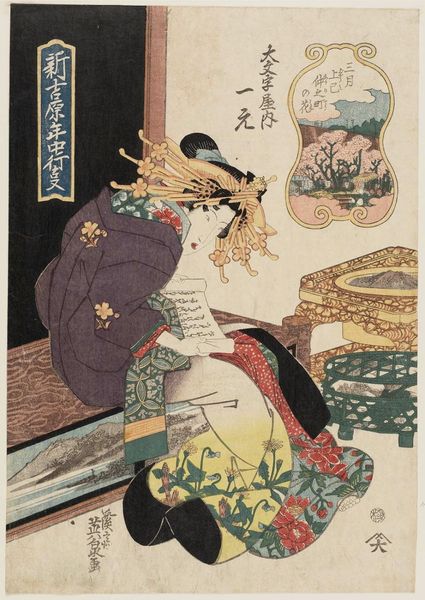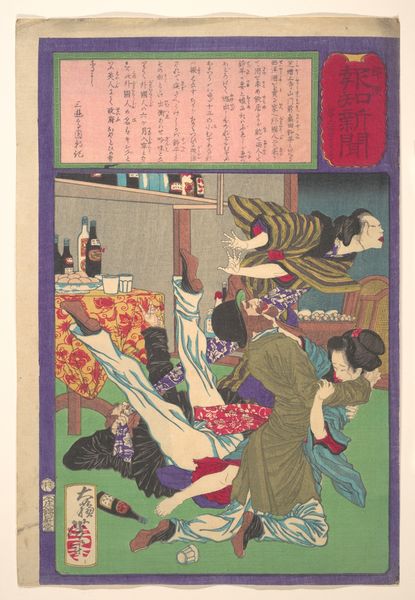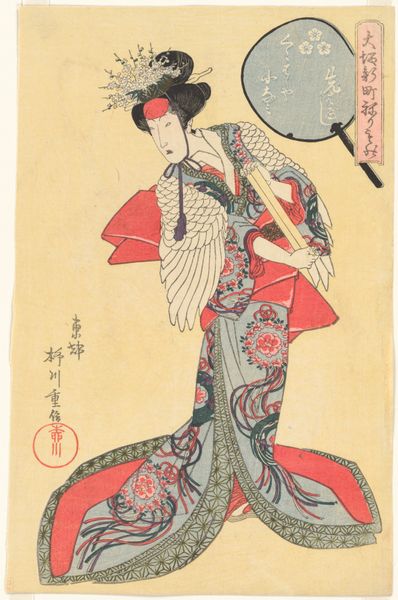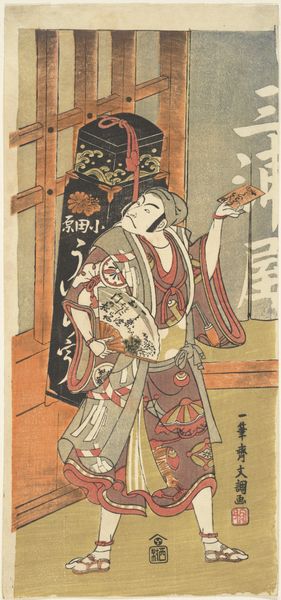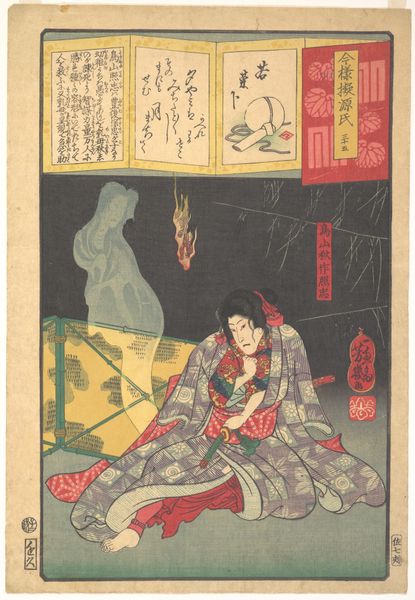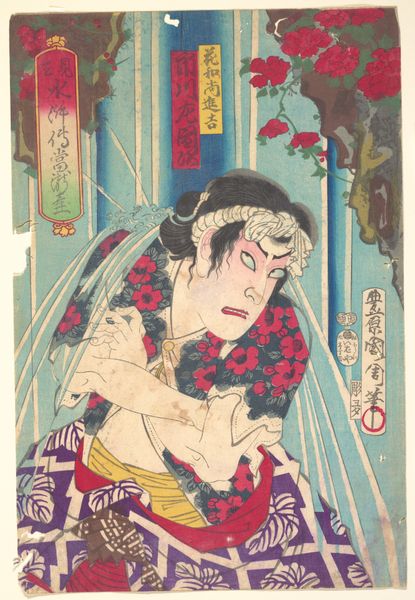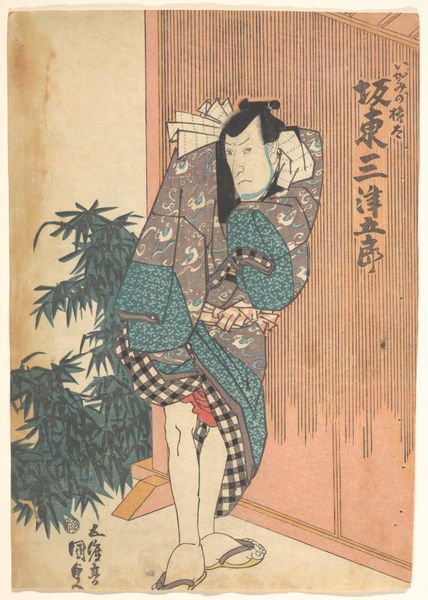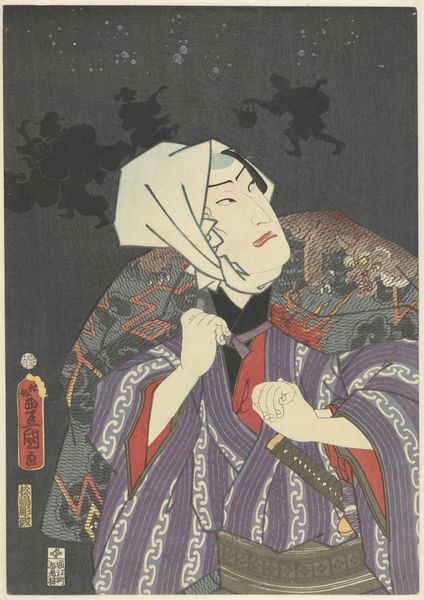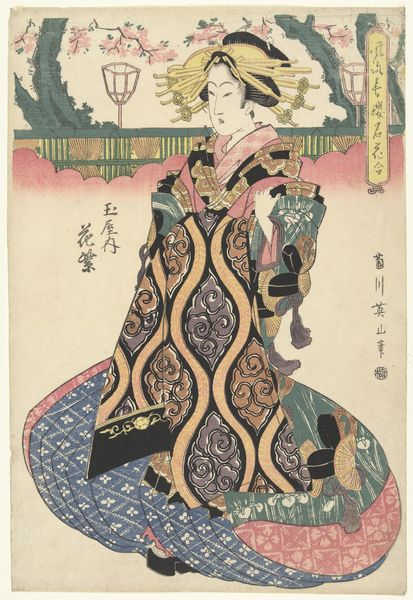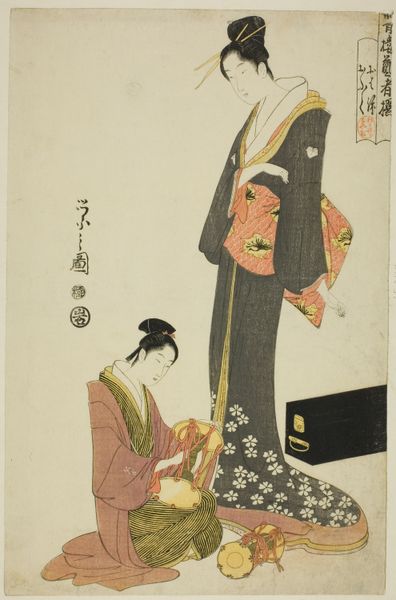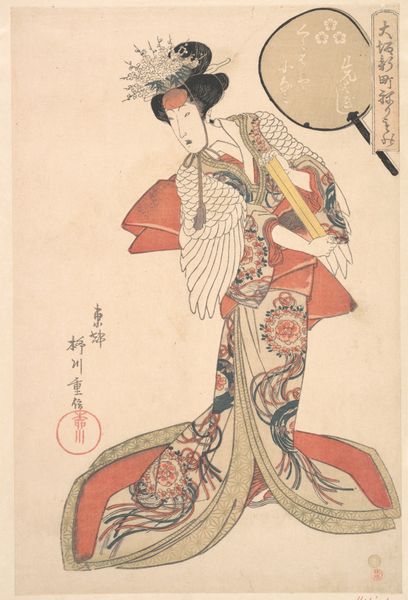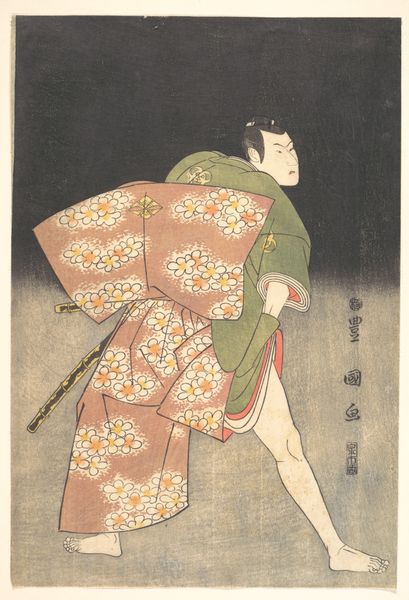
Banzuiin Chōbei, from the series Story of Brocades of the East in the Floating World (Azuma no hana ukiyo kōdan - Banzuiin Chōbei) 1867
0:00
0:00
print, ink, woodblock-print
#
narrative-art
# print
#
asian-art
#
ukiyo-e
#
ink
#
woodblock-print
#
men
#
history-painting
#
sword
#
erotic-art
Dimensions: Image: 14 1/2 x 9 1/2 in. (36.8 x 24.1 cm)
Copyright: Public Domain
Curator: This compelling 1867 woodblock print by Tsukioka Yoshitoshi, titled "Banzuiin Chobei," part of the series "Story of Brocades of the East in the Floating World," grabs you immediately. Editor: It’s visceral. The scene is flooded in blood-red ink, and that central figure – it’s unsettling and somewhat grotesque, yet intensely engaging. There's a narrative tension that's palpable even without context. Curator: Exactly. Yoshitoshi was known for his dramatic, often violent scenes. The medium itself, woodblock printing, allowed for a kind of mass production, democratizing access to these narratives, turning lived events into commodities. These woodblock prints, mass-produced with painstaking, delicate carvings, shaped the historical imaginations of the broader Japanese public, especially the merchant classes. Editor: And consider what kind of narrative Yoshitoshi is communicating. A wounded, possibly dying man, seemingly alone...it echoes so many depictions of martyrdom, though transferred here into the realm of Ukiyo-e. This print, by showing the male body covered in blood, questions both historical trauma and displays a level of vulnerability that might unsettle assumptions of gender in Japanese Edo-period visual arts. Curator: Interesting. The meticulous detailing is incredible – see the patterned kimono, the textures rendered with layered carving of the woodblock. There's an interplay between the delicate, highly stylized technique and the gruesomeness of the subject matter. The visual depiction also reinforces the socio-political context that resulted in mass prints such as these, responding directly to urbanized cultural production as consumer goods. Editor: It brings questions of class and identity together, as this work and many others that emerged out of this time offer insight into alternative realities. Consider the act of depiction. Who benefits from this kind of art being produced? I imagine it provided not only entertainment but also offered avenues of questioning traditional mores and values in that era. It seems both transgressive and deeply human. Curator: The materials and the processes tell one story; the context and the meaning woven into that production give us another perspective. Together, the image allows a profound dive into art’s place within history and society. Editor: I’m left thinking about how Yoshitoshi made visible aspects of society, violence, vulnerability, the individual versus the whole – questions that, regardless of the means or intent, persist into our current moment.
Comments
No comments
Be the first to comment and join the conversation on the ultimate creative platform.
